
Guam is an organized, unincorporated territory of the United States in the Micronesia subregion of the western Pacific Ocean. Guam's capital is Hagåtña, and the most populous village is Dededo. It is the westernmost point and territory of the United States, reckoned from the geographic center of the U.S. In Oceania, Guam is the largest and southernmost of the Mariana Islands and the largest island in Micronesia. As of 2022, its population was 168,801. Chamorros are its largest ethnic group, but a minority on the multiethnic island. The territory spans 210 square miles and has a population density of 775 per square mile (299/km2).

The Chamorro people are the Indigenous people of the Mariana Islands, politically divided between the United States territory of Guam and the encompassing Commonwealth of the Northern Mariana Islands in Micronesia, a commonwealth of the US. Today, significant Chamorro populations also exist in several US states, including Hawaii, California, Washington, Texas, Tennessee, Oregon, and Nevada, all of which together are designated as Pacific Islander Americans according to the US census. According to the 2000 census, about 64,590 people of Chamorro ancestry live in Guam and another 19,000 live in the Northern Marianas.
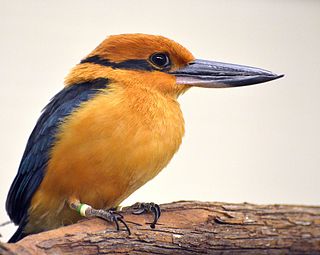
The Guam kingfisher, called sihek in Chamorro, is a species of kingfisher from the United States Territory of Guam. It is restricted to a captive breeding program following its extinction in the wild due primarily to predation by the introduced brown tree snake.
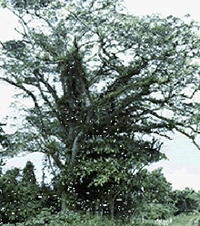
Serianthes nelsonii is a large tree endemic to Guam and Rota of the Mariana Islands. Only one mature tree existed on Guam, while 121 mature trees have been identified on Rota since 1984.

Gadao's Cave, also known as Liyang Gadao, is a rock art site on the United States island of Guam. Located near the village of Inarajan, the cave is the site of a panel of approximately 50 Chamorro pictographs, painted with a mixture of coral lime and tree sap. The most unusual images are of two human stick figures that appear to be carrying things. It is not known who painted them or when, and what their significance is. The legendary chief of Inarajan Gadao is believed to be the creator of the cave's images.
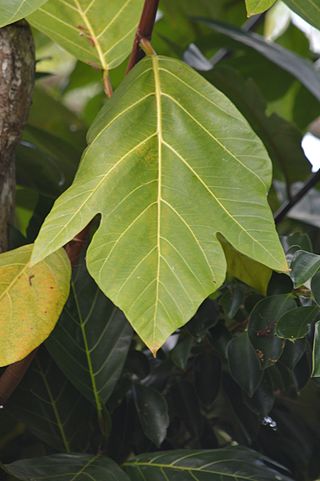
Artocarpus mariannensis, also known as the Marianas breadfruit or the seeded breadfruit, is a species of plant in the mulberry / fig family, Moraceae. It is endemic to the Mariana Islands and Guam. It has been utilized extensively by the Micronesian people, being one of the staple food crops that was introduced to other islands in Micronesia.
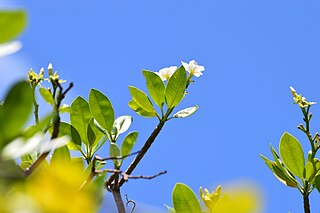
Cerbera dilatata was formerly considered to be a distinct species of tree in the family Apocynaceae endemic to the Mariana Islands. However, after a taxonomic reorganization, this species name is considered to be a synonym of the more widespread Cerbera odollam.

Bikkia tetrandra is an herbaceous member of the family Rubiaceae, distinguished by its white square-shaped flowers. It is native to Papuasia and islands of the western Pacific, including the Caroline Islands, Fiji, Mariana Islands, New Caledonia, New Guinea, Niue, Solomon Islands, Tonga, Vanuatu, and Wallis-Futuna Islands. The stems ignite easily and can be used to make torches or candles.

Elaeocarpus joga is a species of tree in the family Elaeocarpaceae. It is native to the Mariana Islands and Palau. It is a moderately-sized tree with blue-coloured, round, 1.5cm diameter fruit and leaves which turn bright red before they senescence.

Gymnosporia thompsonii is a species of plant in the bittersweet family Celastraceae. It is endemic to the Mariana and Caroline Islands, where it grows as a many-stemmed understory shrub or small tree in karst forests. Its wood is used for fuel and its leaves are used medicinally.
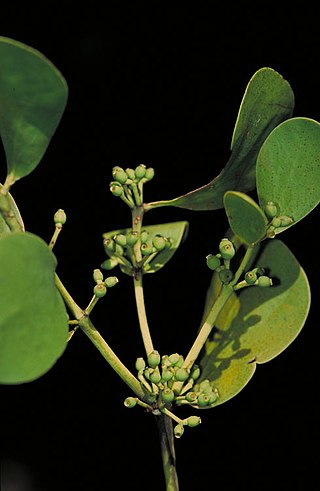
Cecarria is a monotypic genus in the family Loranthaceae. The sole species is Cecarria obtusifolia, a hemiparasitic aerial shrub.
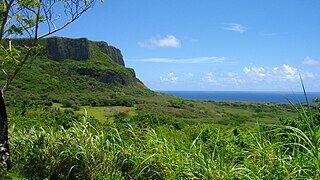
The Marianas tropical dry forests is a tropical and subtropical dry broadleaf forests ecoregion on the Marianas Islands in the western Pacific Ocean.

Varanus tsukamotoi, the Mariana monitor or Saipan monitor, is a species of lizard of the family Varanidae. It is endemic to the Northern Mariana Islands and Guam, and has been introduced to Japan in the Marshall Islands.

Syzygium thompsonii is an endemic tree of the Mariana Islands of Guam, Rota, and Saipan with a striking appearance due to its abundance of white flowers and edible fruit that grow directly from the trunk. It is related to the Malay apple but bears smaller tart fruit.
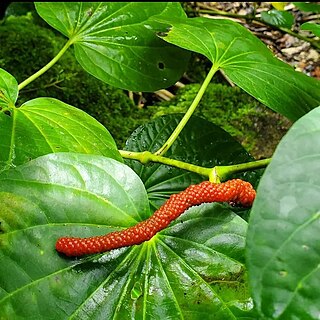
Piper guahamense, the Guam pepper, is a plant in the family Piperaceae, and is endemic to the Mariana Islands.

Piper salicinum is a plant in the Piperaceae family that is possibly endemic to the Mariana Islands (Guam), although there is some confusion in the literature as to whether it may have been collected from Mexico and Panama. It has not been observed since its initial collection in 1792.
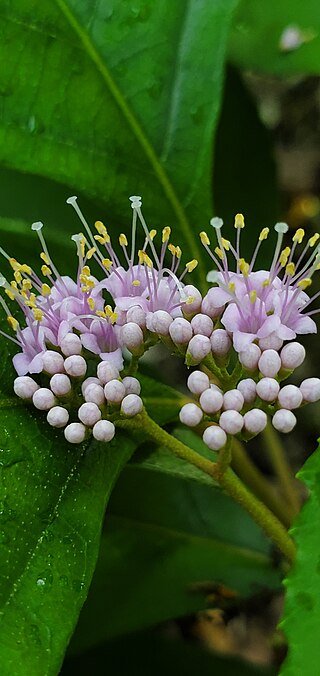
Callicarpa lamii is a plant in the mint family that is endemic to the Mariana Islands. It is one of two Callicarpa plants endemic to the Mariana Islands, the other being Callicarpa candicans var. paucinervia.

Rhaphidophora guamensis is a climbing plant in the family Araceae that is endemic to the island of Guam in the Mariana Islands.

Glochidion marianum is a species of plant in the family Phyllanthaceae that is endemic to the islands of Guam and the Caroline Islands.

























